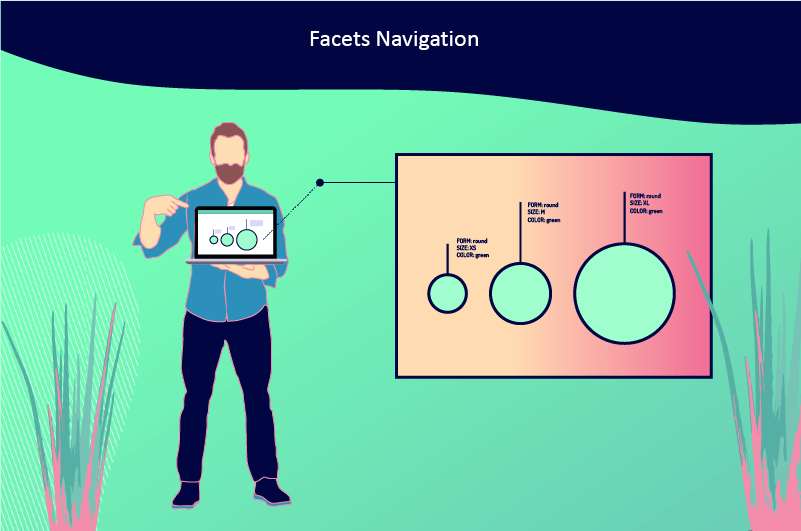Literally, the expression “Faceted navigation” means faceted navigation. It refers to a technique for classifying information that can be found on websites that deal with several subjects. Typically, these are e-commerce sites or sites with several pieces of information divided into categories. The purpose of this type of navigation is to allow Internet users to more easily reach the object of their search using specific criteria based on characteristics that are specific to each category, products and articles. This makes it possible to refine the search and display a page that includes only the desired product or information with remarkable precision
According to the contesquare experience benchmark report published in 2021, the average time spent on a website is 54 seconds including all sectors. Is this enough to get the user to take the action expected of him? Probably not
However, as with most other measurement indicators, this figure is not absolute. It can evolve in a positive or negative way depending on the quality of the website. That is, the user experience
If, for example, you are managing an online business or advertisement site and you have a large amount of data to manage, you don’t want to see users bouncing around before they have found what they are looking for. So you implement a faceted navigation feature to make it easier for them to navigate
This type of navigation, which is primarily aimed at improving the user experience, is based on organizing information in such a way that the user can find the information or product he is looking for in a precise and personal way
This is the faceted navigation which is still known as “faceted navigation” or “guided search”
In this article, I propose to introduce you to faceted navigation and to understand
- What it is;
- How it works
- Its stakes ;
- Its link with natural referencing;
- Etc.
So follow along!
Chapter 1: What is faceted navigation?
In this first part, I explain the concept of faceted navigation
Specifically, I will discuss
- Its meaning;
- What distinguishes it from filters ;
- How it works;
- The advantages it can bring to a website;
- Examples of faceted search
1.1. The meaning of faceted navigation
Sometimes called guided navigation, faceted search/navigation uses the specifics of a product or information as search criteria that users can use to refine their queries.
It is a technique that complements traditional search functions with a navigation system that uses all aspects (facets) of what is being searched
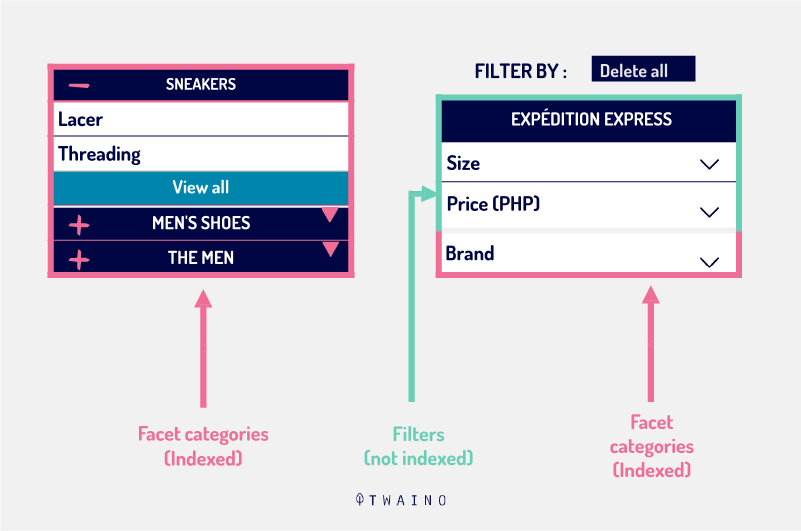
Depending on the case, the facets can refer to aspects such as:
- Color ;
- The size ;
- Length ;
- Style;
- Price or occasion
But let us specify that each element (facet) is not displayed in a fixed way. Rather, they are determined by the nature of the search performed.
The search by facet is therefore a dynamic search, specific and relative to all the information available on the site and which are displayed as the user refines his request
Therefore, by specifying the aspects of a product, the faceted search allows the buyers of a commerce site to reduce the number of results that could be displayed to access the desired item or product
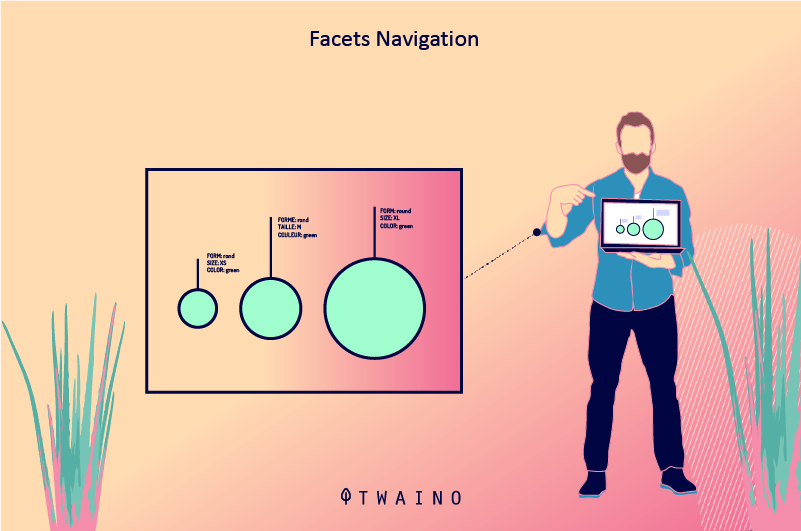
It actually allows internet site users to have predefined subsections and options to filter the options as progressively as they want.
So it is clear that the advent of faceted search is intended to revolutionize internet search
Faceted search is rightly distinguished from simple search filters
1.2 Differences between faceted navigation and filters
Although there is a similarity between faceted navigation and search filters, it seems necessary to recall the distinctions between the two
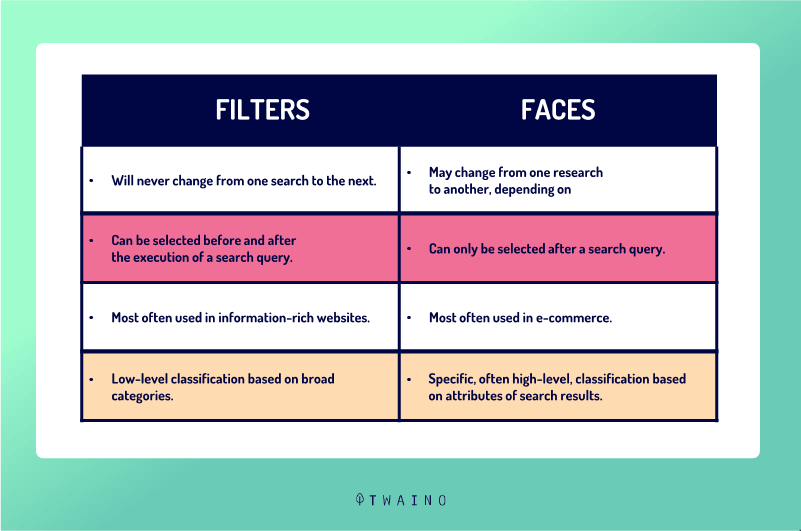
Indeed, both filters and faceted navigation can be used to refine a search, however
- Unlike filters, faceted navigation is more difficult to create and manage
- Filters allow you to refine your search within a given category and apply equally to that category;
- Faceted navigation provides multiple filters, one for each different aspect of content;
- Faceted navigation provides a structure that helps users understand the site and gives them ideas of what is available;
- Faceted navigation or faceted search relies on various selections and choices of options that change depending on the categories selected by the user
Now that you know the difference between filters and faceted navigation, discover the advantages of implementing such a system on a large website
1.3. Why integrate a faceted navigation on your website?
Offering a faceted navigation to Internet users allows them to reduce the number of efforts they have to make before finding the specific article they are looking for
This in turn gives webmasters an opportunity to offer the best solutions related to the buyer’s interests. This allows them to increase the possibility of the prospect becoming a customer by purchasing the product or service
Apart from these advantages, the implementation of a faceted navigation system also allows
1.3.1. Increasing the user experience
User experience can be understood as the impression that each user has when he arrives on your website and interacts with it
In the world of SEO, it covers a double aspect. The first one is of course the feeling of the user when he comes in contact with your website, but the user experience goes further and also takes into account the satisfaction of the quality requirements of the Google search engine. This is the second aspect

The satisfaction of the Google rules and the satisfaction of the customer have a lot to do with the success of your site
The faceted navigation by its purpose is part of this objective. If you have a content-intensive site, it is probably important for you to provide a concise and simplified search process. This will allow users to find what they came for and enhance the user experience of your site
Indeed, the faceted search features will lead them through the different filtering options. This is a simple and effective way for him to locate available products to satisfy his needs.
1.3.2. Gathering information on the data
By implementing faceted navigation mechanisms, you can collect information about how users use faceted navigation on your website. This data plays an essential role in optimizing and improving the website.

Specifically, thanks to this data you have an idea about how users behave as well as what products they want to have the most. It can also give you ideas on new products that are likely to be well promoted elsewhere
Likewise, the more information you collect and analyze about how users are using the navigation facets, the more accurate data you can get about what they are really interested in
This will likely give you more leverage to meet their desires.
The end result of all this is of course, more conversions, which means more purchases and more money in your wallet
1.3.3. Ranking your site on long tail keywords
Implementing faceted navigation can be a factor in getting you to a good position for long tail keywords. Long tail keywords are keyword queries that tend to be longer and consist of multiple words.
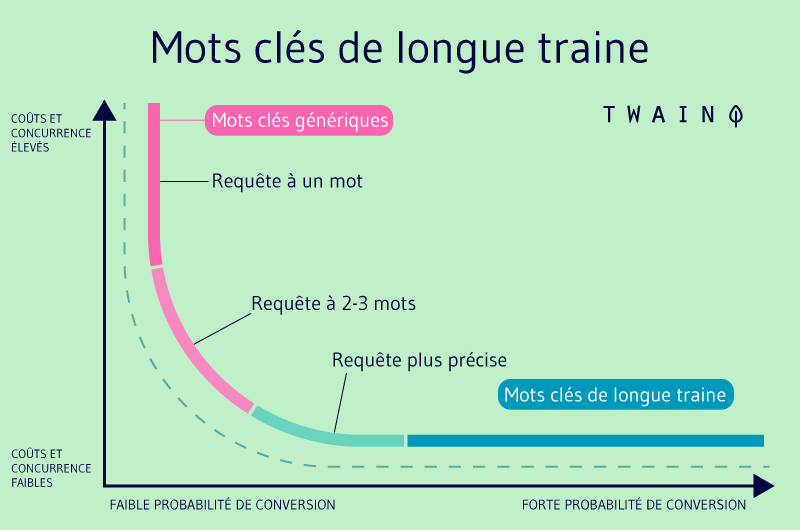
They are more specific, have a lower search rate, but have a higher conversion rate than general purpose keywords
You can therefore position yourself on all of these keywords and use the faceted search to help Internet users discover them thanks to the different filters. The existence of these long tail keywords on your website prepares your site to be positioned later on the search engines.
Let’s now take a look at some examples of faceted search before discovering the link between SEO and faceted navigation
1.4. Some examples of faceted navigation
There are many examples of platforms that have implemented faceted search systems. As an example, I can cite
1.4.1. Yelp.com
Yelp. com belongs to the multinational company of the same name Yelp. It is an American multinational based in San Francisco. Through its website, it develops, hosts and publishes through Yelp.com ads about local businesses
As you can see, once you arrive at the yelp website, you can see the different types of filters and attributes. These filters vary depending on the category you are in
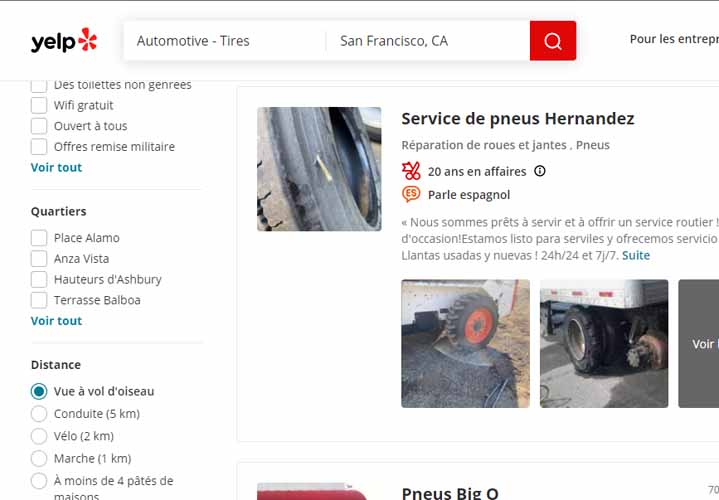
1.4.2. Klwiness
Klwiness is a website that specializes in selling wine. Once on this site, you also have a search area based on faceted navigation. It allows you to specifically find the type of wine you are looking for
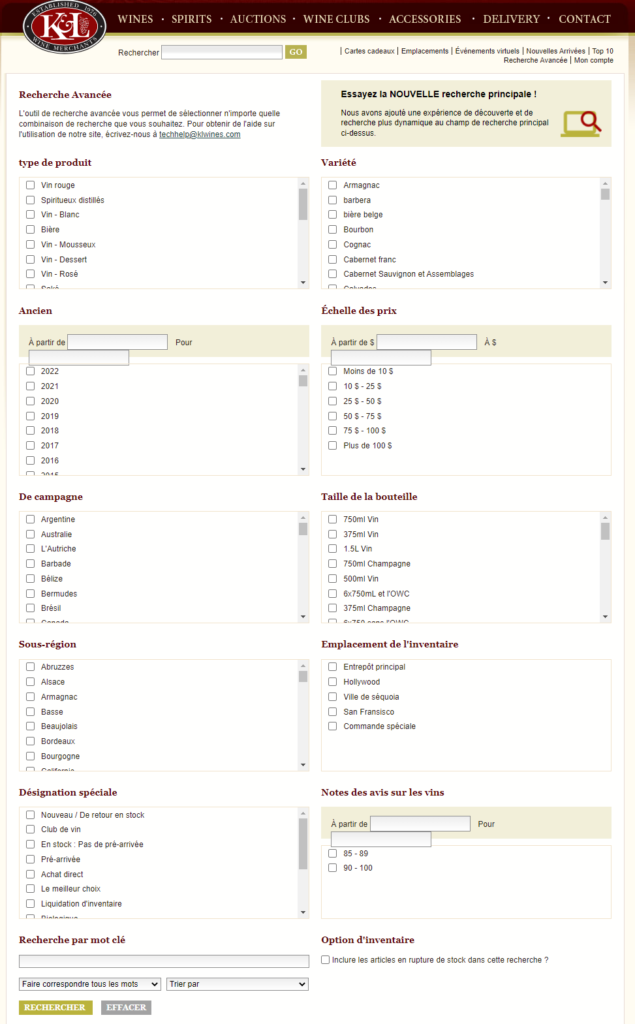
Once on the site, you realize that the site offers a wide variety of filters.
1.4.3. Amazon
Another site that offers faceted navigation is Amazon. Once you are at this e-commerce site, you also have the ability to do very refined searches. This can be seen in each product category.
In the category Book for example, if you want a specific book, you can go to the advanced search and fill in the different fields that are presented to you:
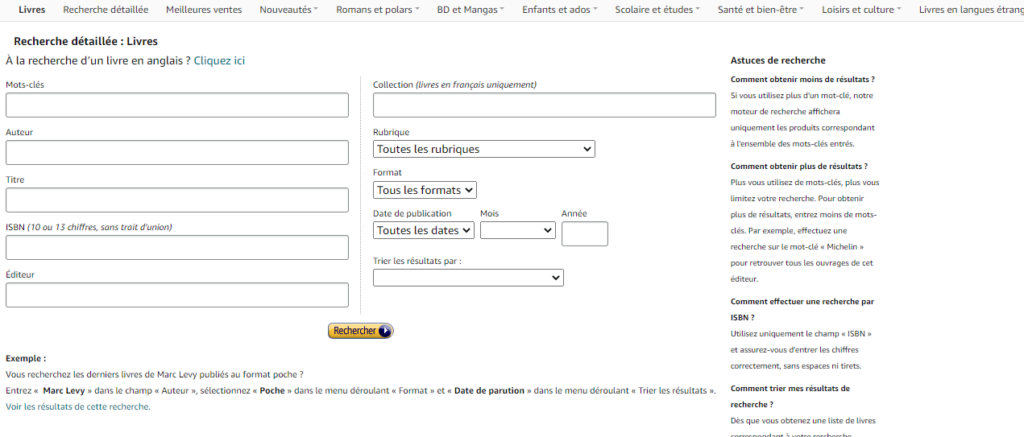
1.4.4 Xtreme Diesel Performance
With filters such as year, make and engine, the Xtreme Diesel Performance site offers users a form of faceted navigation allowing them to find the type of car they want:

Now that you have a better understanding of what faceted navigation is, let’s see how it relates to SEO.
Chapter 2: How to implement faceted search functionality on your website?
In this second chapter, I present the methods that webmasters use to integrate the faceted search functionality on a website
However, before I talk about it, I need to explain how it works.
2.1. How does faceted navigation work?
As you can see, faceted navigation works on the basis of filters and attributes specific to the different categories of filters available on each website. These categories vary from one site to another depending on what the owner considers relevant for his users.
In fact, for each product category, the site’s webmasters propose a series of relevant attributes from which the user can refine his search and find what he is looking for
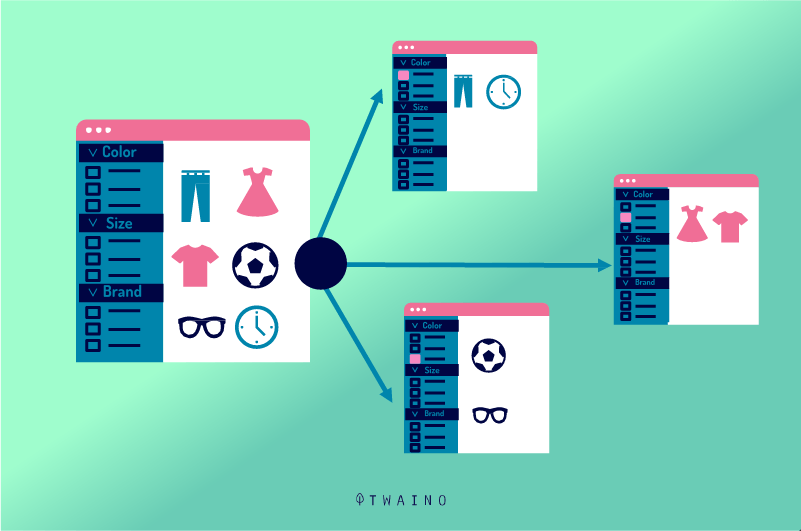
On a more technical level, when a user arrives at any site that offers faceted navigation, notice that one of the following 4 things happens on the site
- The lists are updated automatically and it is the selection without reloading the page that is displayed
- The page reloads, the lists reflect the selection;
- When the user clicks on an attribute in the list, nothing happens. They would have to click on the “apply” or “run search” button first before the lists are updated to reflect the selection
- Once the user clicks on the “apply” or “search” button, a new page loads.
Whatever happens, it should be noted that it has something to do with the model set up on the website. In fact, it all depends on how the user applies the filters. If, for example, he or she is in the habit of applying several filters at once, we can consider models three or four.
In addition to the behavior of the site, a faceted navigation can also affect the URL of the website.
Specifically, it affects
- The display of the selection is done without changing the URL
- New parameters are added to the URL
- A hash is observed in the URL;
- A new static URL is created.
Now that this is clear, what about creating a faceted navigation on a website?
2.2. how to create a faceted navigation on a website?
To set up a faceted navigation on your website, you probably need to follow this path
2.2.1. The actual creation of facet navigation
The implementation of facets on the website can be done in two ways. The first method consists of inserting the lines of code corresponding to the facets directly into the code of your website or by storing them in a file
The second method consists of dynamically extracting the list of product facets from the query results and saving it as an answer to a specific query.
To be clear, to use the first method, you need to code the facet list using the information you have about the product
Then, this facet list must be integrated into the site’s code so that for each query made from the filters, the site sends a specific response
Using this method is not easy, as it means that you will have to update the site when you want to add a new product or modify/improve the faceted navigation filter list.
The second method removes this part of the work and allows you to dynamically manage this list. It is also based on a deductive process. To implement this method, you need to extract the facet list from the product itself.
Here is how:
- Based on a query formulated by Internet users, a faceted list is created from the specificity of each item that appears
- Its product attributes are recorded and a faceted list is used;
- Determine which facets can be applied:
- For each product, return the search results to the list so stored that includes the product facets
- The response should include everything the front-end needs to create its search results page. The response will also contain additional information needed for better displays
This is an overview of how faceted navigation is implemented on a website. Learn more by visiting: Implementing faceted search
2.2.2.. What you need to know beforehand
Before discussing the different steps that need to be followed to implement a faceted navigation on a website, it is important to remember that this site is generally an e-commerce site. But, other categories of sites can host a faceted navigation
These can be publisher sites, job search sites or even classified ad sites.
The faceted search can be used on each of these sites to sort information by
- Price ;
- Location;
- Types;
- Size;
- Time period ;
- Etc.
The criteria taken are not fixed, each webmaster can use the parameters they wish to integrate, however they must ensure that they are relevant to the user
In addition, the choices depend on the nature of the site, its size and the products and services that are offered on the site
2.2.2.1. It is not just a question of arranging links by category
Apart from this clarification, it is important to remember that the implementation of faceted navigation on a website is not comparable to a simple arrangement of the site’s links by category
Navigation must be based on both a good structure of the site, but also the implementation of certain components (menu bar, drop-down lists, sub-categories, search filters, automatic suggestions, etc.)
However, for websites of a certain size, even the implementation of components does not always allow a user to find the product he is looking for very precisely
2.2.2.2. The mechanism that leads to the display of the answer to the query
In order to set up a faceted navigation on a website, you must also understand all the mechanisms that are set in motion
Indeed, when you have a faceted navigation on your website, here is what happens from a technical point of view so that the user can display his request
- Once the filters are selected and the search is launched, the query is sent to the search engine
- The search engine receives the query and executes the request while recording all the information corresponding to the query;
- The results are then returned and displayed based on the selected facets
- The results that are displayed are not based on a predefined list of facets. Instead, it is a dynamically generated list
On the backend, you will extract facets from each query result set.
On the front end, you will use undefined container placeholders instead of predefined containers
Now let’s look at the connection between faceted navigation and SEO at the Google level
Chapter 3: What is the connection between faceted navigation and SEO?
In this chapter, I will discuss how faceted search can influence SEO through
- The challenges of faceted search;
- The SEO problems that faceted search can give rise to;
- Solutions to these problems
3.1. The challenges of faceted navigation
Only 40% of websites have implemented a faceted navigation system on their website. This means that faceted navigation is not a system accessible to all webmasters
This is justified insofar as even when browsing most of the sites that have integrated it, some fail to offer something relevant to the Internet user
In fact, as one expert explains, faceted navigation must meet certain requirements and include
- Popular product aspects or facets;
- The size facets of the product;
- The useful facets of the product;
- Dynamic facets, i.e. facets that must be adapted to each Internet user
In view of all this, it is clear that the faceted search has an impact on the natural referencing of your website, this is what we will see in the following lines
3.2. Faceted navigation and SEO
When you implement a faceted navigation on your website, you must be careful, because it can affect your natural referencing
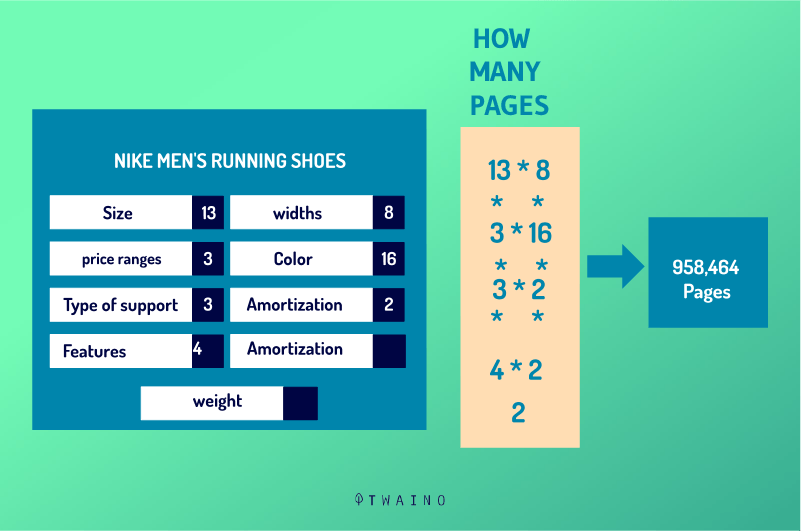
SEO refers to all the techniques used to optimize the display of a page to a better position in search results
However, to achieve this optimization, you must meet certain conditions. It is precisely the realization of these conditions that faceted navigation puts in difficulty.
Indeed, in one of its publications addressed to webmasters, Google stated that faceted navigation is a better way to help the user find what he is looking for. But, it is often not adapted to organic search, because it can :
3.2.1. Cause problems with URLs
What you should fear with the implementation of faceted navigation is first of all the creation of numerous combinations of URLs. The same content will be accessible by several URLs instead of a single URL as recommended by Google
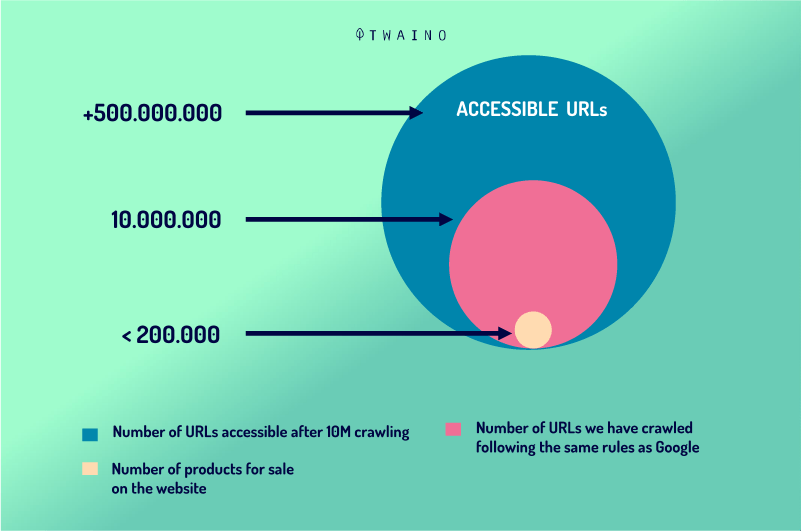
Indeed, as you know, each unique content (product/article) is linked to a unique URL whose path is accessible when clicking on the product or article or when a search is performed in the search results
However, when you set up a faceted navigation and are not careful, many URLs are created for the same product from different URLs.
This eventually leads to the advent of duplicate content on your website
3.2.2. Increase the crawl budget
Besides the link problems you will have with poor faceted navigation management, there is also your crawl budget that can be affected. In fact, as you know, the Google search engine crawls the resources on your website at a given speed and in a given proportion
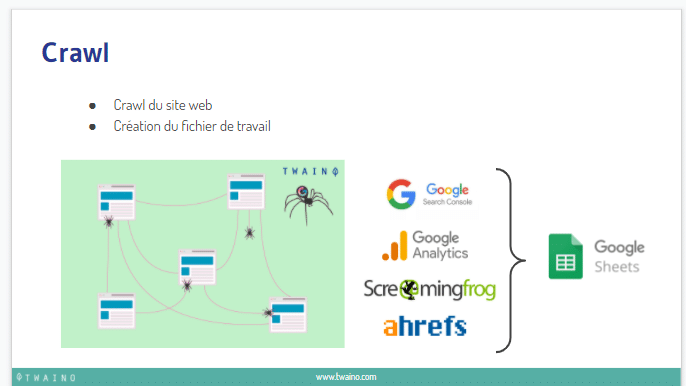
It therefore devotes a limited amount of resources to crawl on the website. Therefore, when this limit is reached, the probability that your site will not be explored increases
3.2.3. Ballooning of the search engine index
Ballooning occurs when search engines index pages that do not have a real added value. In other words, when robots register pages of poor quality
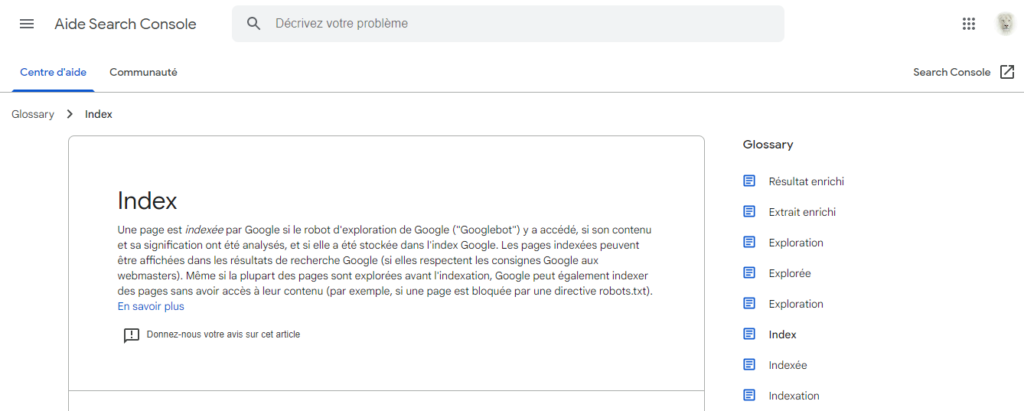
By dint of crawling pages that have no added value on your website, your website loses quality and is likely to be downgraded in the search results.
3.2.4. PageRank decrease
Another problem you may have on your website when you implement faceted navigation is the decrease of PageRank
As the name suggests, it literally refers to the rank your page has in the search engine.
In reality, it is a Google algorithm that determines the relevance and quality of a website by assigning it a score. The PageRank transmitted around a site is determined by the sum of the Pagerank that each page of your internet site presents i.e. each URL.

Facet navigation can be a problem, as many of these pages generate many internal links.
The various problems I have just mentioned can be overcome. It is therefore not worthwhile to make it a hindrance to not take advantage of the benefits that faceted navigation offers you.
In order to deal with them, I suggest that you discover some tips in the following lines.
3.3. Overcoming the problems of faceted navigation
Before presenting the various tips that will allow you to deal with the problems that may arise from faceted navigation, I suggest you learn how to detect them
3.3.1. How to detect problems with faceted navigation
There are always warning signs of problems that your website might have. It is therefore necessary that you know how to detect them at the right time
When you have a faceted navigation, here are some steps of what you can do to know if there is a problem
Step 1: Run a search on your website
A better way to check for signs of index overload is to search Google using the “site:” search operator.
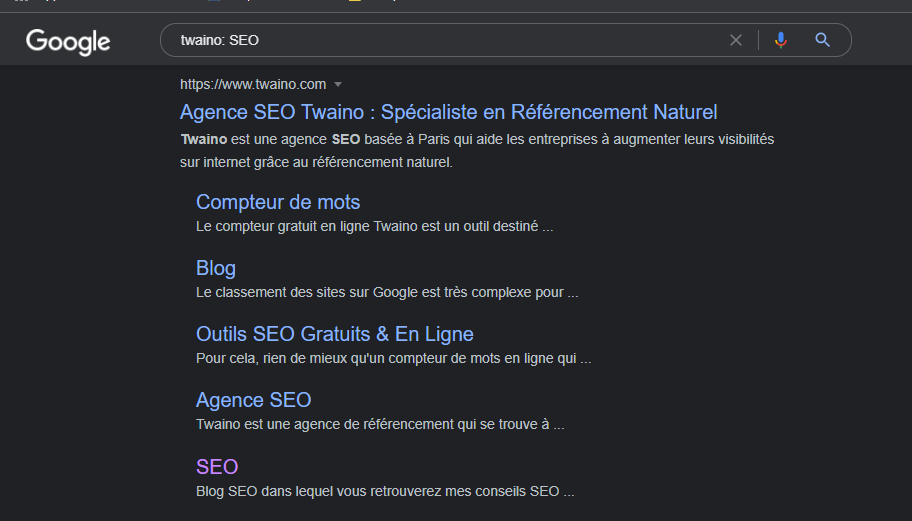
Once the search results come up, take note of the number of results returned by Google and see if it is disproportionate to the URL normally available on the website
If it is, you should take note of it, as it implies that you are experiencing Google index bloat
Step 2: Google Search Console (GSC) coverage reports
Checking the GSC coverage report is another way that you can easily find the crawling and indexing issues contained on your website
To check
- Simply go to the “Coverage” report in GSC ;
- And select “Valid” on the graph to get a more accurate number of pages indexed by Google:
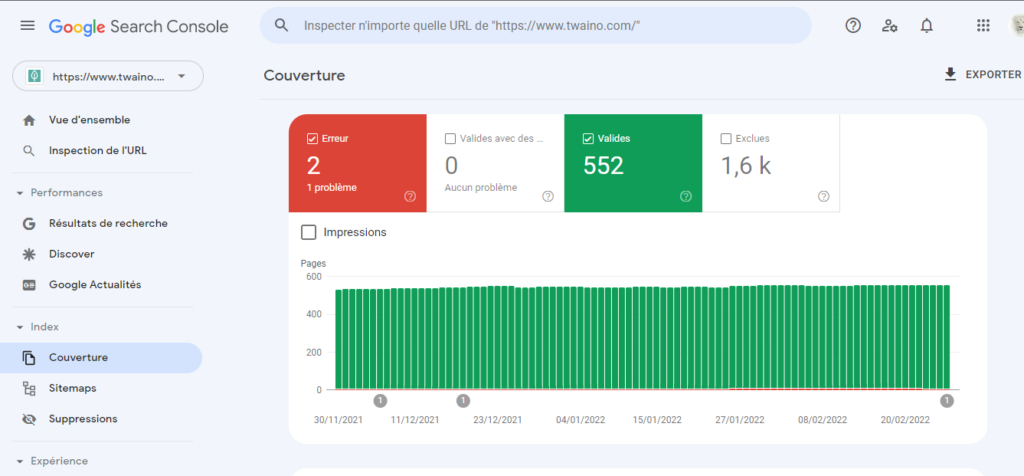
If you’ve recently implemented a faceted search, and it’s exploded, it’s probably an indication that you’re having a problem
Step 3: Collect more data with a site auditor
Using a site auditor and the search console control panel, you can also detect possible problems with faceted navigation
Alternatively, you can use some site auditing tools to identify faceted navigation problems
As Ahrefs’ site audit can help remedy this by giving you detailed information about the URLs discovered during site crawling.
3.3.2. How to fix faceted navigation problems?
In case you are having trouble with faceted browsing, you can try the following solutions:
3.3.2.1. Use canonical tags
The rel=canonical tag, also known as a canonical link, is a type of HTML code
Webmasters use it to solve their problem of duplicate content
Indeed, once they insert it in their website, it helps the search engine to rank a page from a specific set
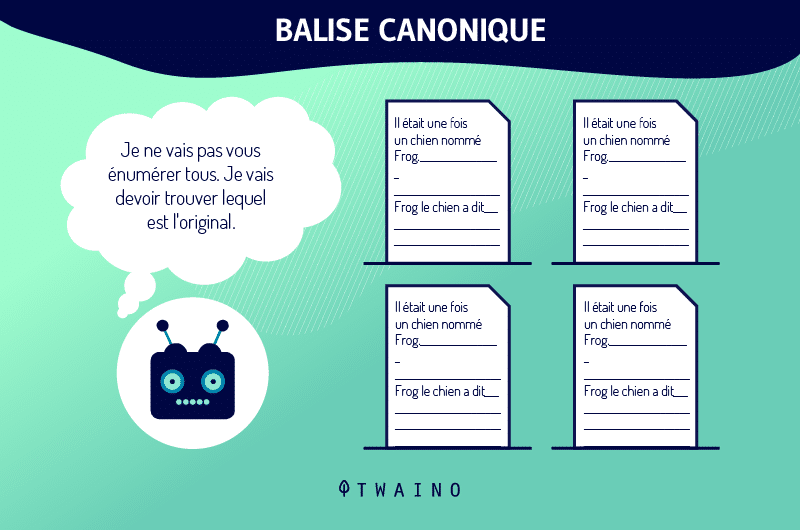
Canonical tags tell Google that you have a preferred version when there is a group of similar pages
So once there are many similar URLs that are created as a result of faceted navigation, you can set up a canonical tag at the page you consider most important
Not only will Google display the canonicalized page in a search, but also, you will find that the canonicalized page’s PageRank retains its value.
The canonical tag looks like this: rel=canonical
If you have an online store and you want to implement the canonical tag to a category page, you just need to add it to the URL of the facet
3.3.2.2. Using the Noindex tag
Another tag you can use to deal with the consequences of faceted navigation is the Noindex tag

This is a tag that is inserted in web pages to indicate to search engines not to index a web page even if it is explored
It is often inserted in the header of the web page and takes this form: .
Implementing a Noindex tag ensures that URLs that should be displayed for faceted navigation are not displayed at the SERPs. It also prevents the dilution of the PageRank of your links
However, it should be remembered that the Noindex tag is not an effective solution when you have problems related to the management of your exploration budget.
3.3.2.3. Using the robots.txt file
The robot.txt is a text file that gives guidelines on how the search engine should crawl a website. This file is located at the root of the website. If you are using the search console, you can find your robots.txt file there
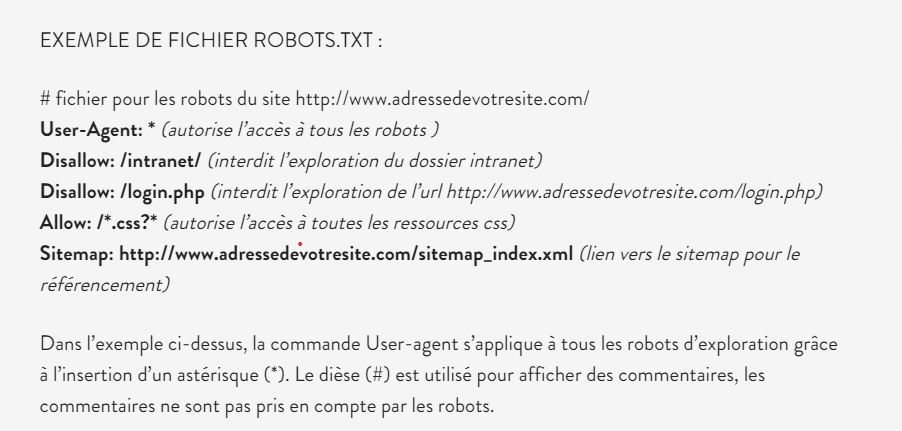
The robots.txt file can be used to solve problems related to the faceted search available on your website as it has the property
- Prevent search engine crawlers from browsing duplicate content
- Prevent the display of certain pages in the SERPs.
In case you have difficulties with the faceted navigation on your website, you can use the robots.txt file to correct them by prohibiting the exploration by Googlebots
However, keep in mind that when the robot.txt file may fail to work if
- If you don’t have a banning template in your URL
- If you want to block some faceted URLs and allow others at the same time.
Also, I invite you to read the article “What is a robot.txt and how to use it” to learn more not only about the robot.txt file, but also how to create it.
3.3.2.4. Using the Nofollow tag
The Nofollow tag is a neutral link that takes this form: rel = Noindex. In terms of operation, the Noindex tag tells the search engine not to follow a link. More precisely not to consider it in the exploration of the website
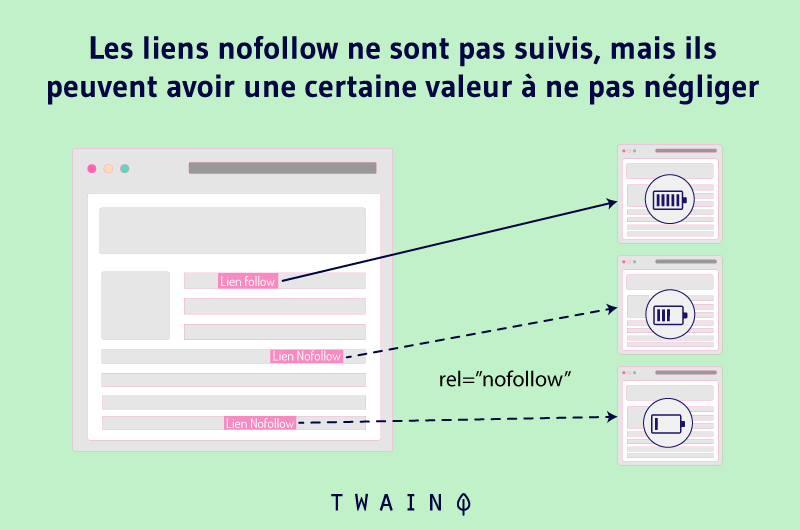
This tag can help solve the problem of crawl budget, because it will be able to invite the search engine to “not follow” all internal links to facets that are not important for the bots to crawl.
If you add an internal link to a page with multiple facets applied, it is recommended to add a nofollow tag to the link to preserve the value of the link. This tag tells bots that you don’t want them to crawl the link
To create a nofollow tag, you just need to modify the code of your page from the site editor by adding the rel = nofollow attribute
3.3.2.5 Using Ajax
Another solution that will allow you to solve the problems of faceted navigation that arise on your site is AJAX. Ajax stands for asynchronous JavaScript and XML
It is a technology that allows webmasters to create dynamic web pages capable of loading certain features without reloading the entire page
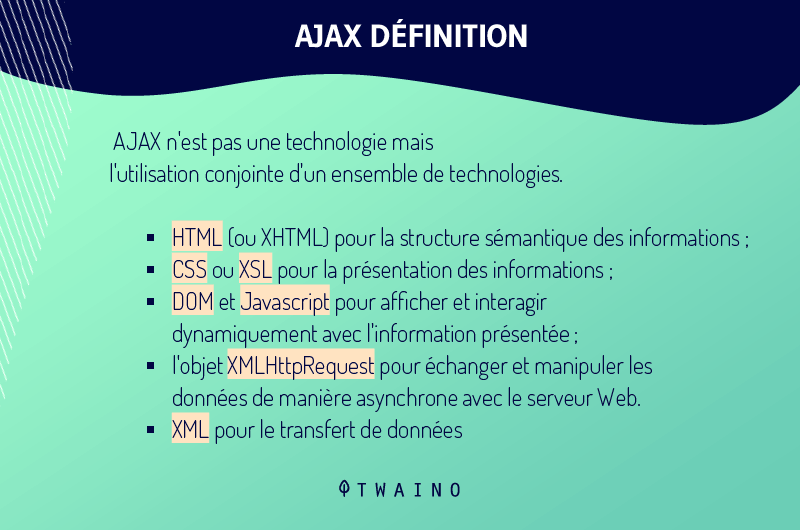
Thus, its advantage for faceted navigation is that a new URL is not created when a user is on a page and applies filters.
The whole process takes place on the client side with JavaScript, without involving the web server at all
When using such an approach, you simply need to ensure that there is an HTML crawl path to the products and pages you want to rank, and make sure that search engines can access each valuable page
On the other hand, by configuring your server to respond to these requests with server-side HTML rendering, you can enjoy fast AJAX-powered faceted navigation without hindering your website’s SEO usability
AJAX can solve the problems of duplicate content, cannibalization and wasted crawl budget
3.3.2.6. Using the search console
With the URL Settings tool in the console, you can specify what effect each of your settings should have on the page
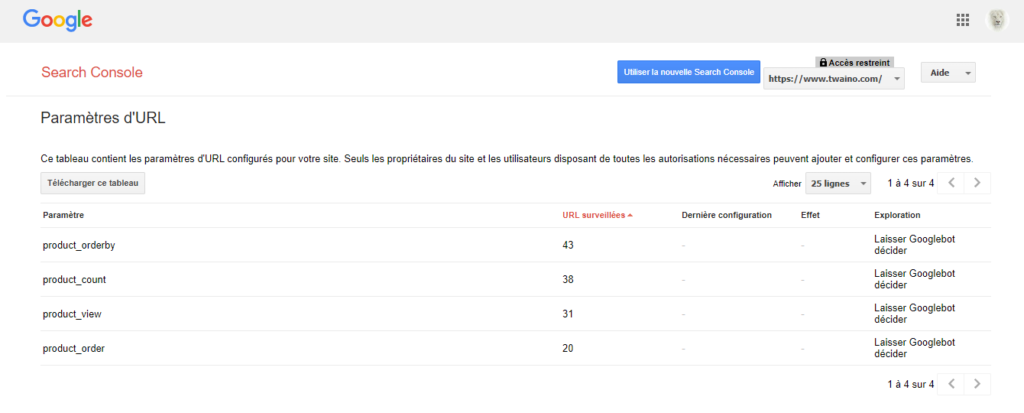
If canonicalization has not solved the indexing problems, the URL settings report in GSC is probably the best way to optimize crawling
It will allow you to tell Google how to manage your URL settings and how to crawl them more efficiently
The limitation is that this method does not work when your faceted navigation does not use URL parameters.
These are the various solutions that will allow you to solve most of the problems that may arise after implementing a faceted navigation on your site
But while waiting for the problems to arise, learn in the next chapter the best practices to implement to take advantage of faceted navigation
Chapter 4: Some best practices for taking advantage of faceted navigation
In this final section, I outline 6 best practices that will allow you to take full advantage of faceted navigation
Taking them into account will also ensure that you avoid problems with faceted navigation to a certain extent.
4.1. Define appropriate mental models
There are different key design patterns around which you can design your website
- Search,
- Filters
- And sorting
Each of these elements corresponds to a specific mental model that web users use during the online search process
So you need to design interfaces with animations and functions that match these models
Let’s look at them in a little more detail:
- The search: When users want to find options that match their own defined keywords;
- Filtering: Filtering occurs when users make choices that reduce the number of items available to them;
- Sorting: Sorting occurs when the user chooses the order in which the items available on the site are displayed.
With these concepts in mind, you can begin to use mental models to encompass all the actions users will take when searching for content on our site.
4.2. follow Google’s best practices
Google recommends the following practices for sites that implement faceted navigation
- Prevent clickable links when no products exist for the category or filter
- Improve the search experience by keeping a consistent parameter order based on parameters that are useful to the searcher; and
- Ensure that attributes that do not change the content of the web page like session IDs are embedded as standard values and not as directories;
- Do not act on clickable anchors when products exist for the selected category or filter;
- Do not allow clicks or URLs to be created when no items exist for the filter
- Add logic to the display of URL parameters
- Delete unnecessary parameters rather than continually adding values
4.3. Consider the client
Your site’s faceted filters should meet the needs and interests of as many users as possible. To build the best faceted search, you need to understand what your users are looking for and how

To do this, search data analytics is a powerful way to do so
By tracking popular search keywords and metrics such as click-through rates, you can see how users interact with your content and what types of facets they might use.
Don’t forget to include facets based on social evidence such as reviews and ratings to drive customers to new things while building their trust in your site’s products and services.
4.4. optimize the number of facets
While it’s essential to have facets that meet customers’ needs, it’s also important not to have too many options
Choosing the correct number of facets will depend on your use case and the insight of the user
A large number of facets, especially if there are several unnecessary or unused facets, can overwhelm users
When analyzing your search data, you need to be aware of which facets remain unused and adjust them on an ongoing basis.
Also note that facet options should adjust contextually as users type to include only relevant options
For example, when a user searches for a shirt, facet options should include color, price, and brand, but should not include size filters.
4.5. Allow multiple facets to be selected simultaneously
If your content catalog is large, it is likely that a single facet selection will not narrow down the results enough for most customers to find what they are looking for.
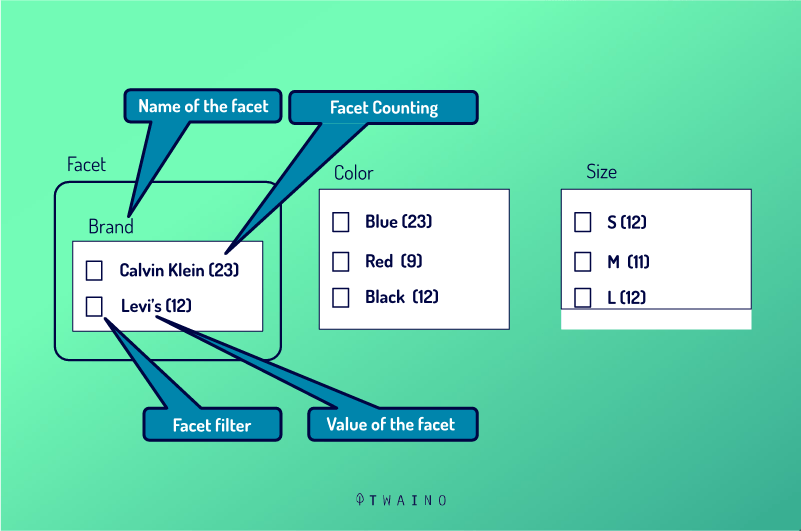
However, with multiple facet options, they are much more likely to be able to do so
4.6. Audit the faceted navigation on your website.
If you’re working on a site that has faceted navigation functionality, it’s a good idea to audit the website pages often

This audit can be done based on a series of practical questions consisting of checking if you are adopting a bad practice on the site
Here are some of those questions
- Are you blocking pages that are not supposed to be blocked?
- Are you indexing pages that are not supposed to be indexed?
- Are you wasting your crawl budget?
- How many pages created for faceted navigation are duplicated?
The site you manage may have thousands or millions of pages with faceted navigation in place, so you should know that only sites that show up without duplicates can benefit from an SEO perspective.
4.7. Configure URL settings for webmaster tools
You need to have a better understanding of the behavior of URL settings on your website
Furthermore, make sure that there is always a clear path to each element or article that makes up the site
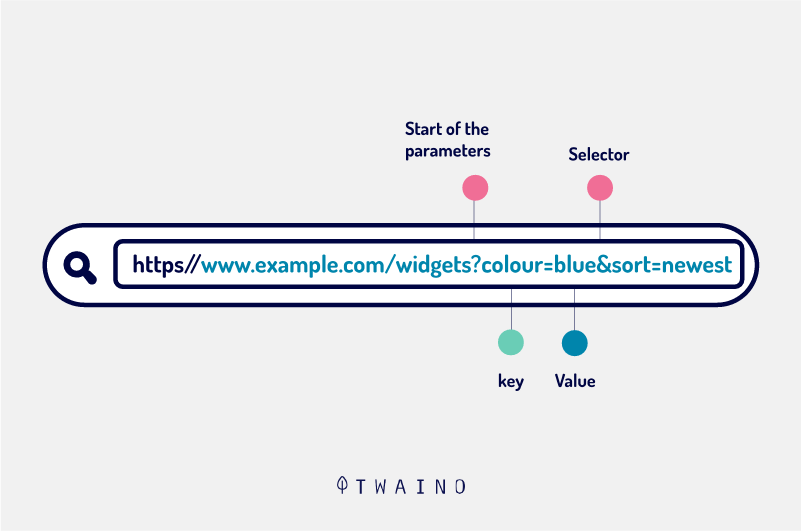
For example, with URL parameters in Webmaster Tools, you can list the name of the parameter, the effect of the parameters on the page content, and how you want Googlebot to crawl each URL containing that parameter
In summary
In summary, faceted navigation/search is about integrating a search system on your website to help users find what they are looking for
This type of navigation with filters is different from simple search filters
It has an influence on SEO and if mismanaged, it can create difficulties for a better display of sites
In this article, I have discussed several aspects of faceted navigation which are
- The meaning ;
- SEO difficulties;
- Solving SEO problems
- As well as the best practices to take advantage of it.
I hope it has helped you to better understand everything behind the term faceted navigation
See you soon!

